The Many Styles of Barbecue
America is home to a myriad of regional barbecue styles including what many call the big four: Kansas City, Memphis, the Carolinas and Texas.

Kansas City style is known for its slow-smoked, sweet-seasoned rubs on meats, often cooked with a brown-sugar based sauce with the heat kept low to avoid caramelizing. Burnt ends are the favored K.C. meat, along with thick cuts of bacon made by pressing and smoking pork shoulders. KC-style pitmasters also tend to choose hickory wood for smoking.
Memphis style, also referred to as Tennessee barbecue, is dominated by pork cuts, especially the quintessential Memphis style pulled pork sandwich adorned with creamy coleslaw, and pork ribs prepared in styles both wet and dry. Wet ribs are sauce-slathered before, during and after slow smoking. Dry ribs coat the meat with spices before cooking to allow the true meaty flavor to dominate.
The Carolina style literally goes ‘whole hog’ by slow roasting the entire pig for at least 12 hours – and this ancient style of cooking requires a moistening mop sauce during the process that can last up to 24 hours.Western North Carolina eschews the aforementioned method and instead focuses on pork shoulder. Both tend to use the thin ‘mop sauce’ with varying ingredients including vinegar, apple cider, tomato juice and beer.
Oklahoma’s southern neighbor produces Texas-style barbecue known for an emphasis on east Texas hot links, beef ribs and especially brisket. Favored methods include smoking over coal and serving sans sauce while others prefer the flavor of Mesquite-smoked meats. Some Texas-style pitmasters choose to focus on chopped smoked beef sandwiches dripping in a vinegar-based sauce.
The Sooner State, however, has its own style – with Oklahoma-based BBQ restaurants putting a twist on the classics.
“We are uniquely Oklahoma BBQ – smokin’ since 1996,” says Leslie Curtis, general manager at Earl’s Rib Palace in Edmond.
Football legend and barbecue aficionado Billy Sims says of his restaurants, Billy Sims Barbecue: “We are Oklahoma style – so in our opinion its low and slow; we cook 10 to 12 hours. Our meats are smoked fresh daily with pecan wood.”
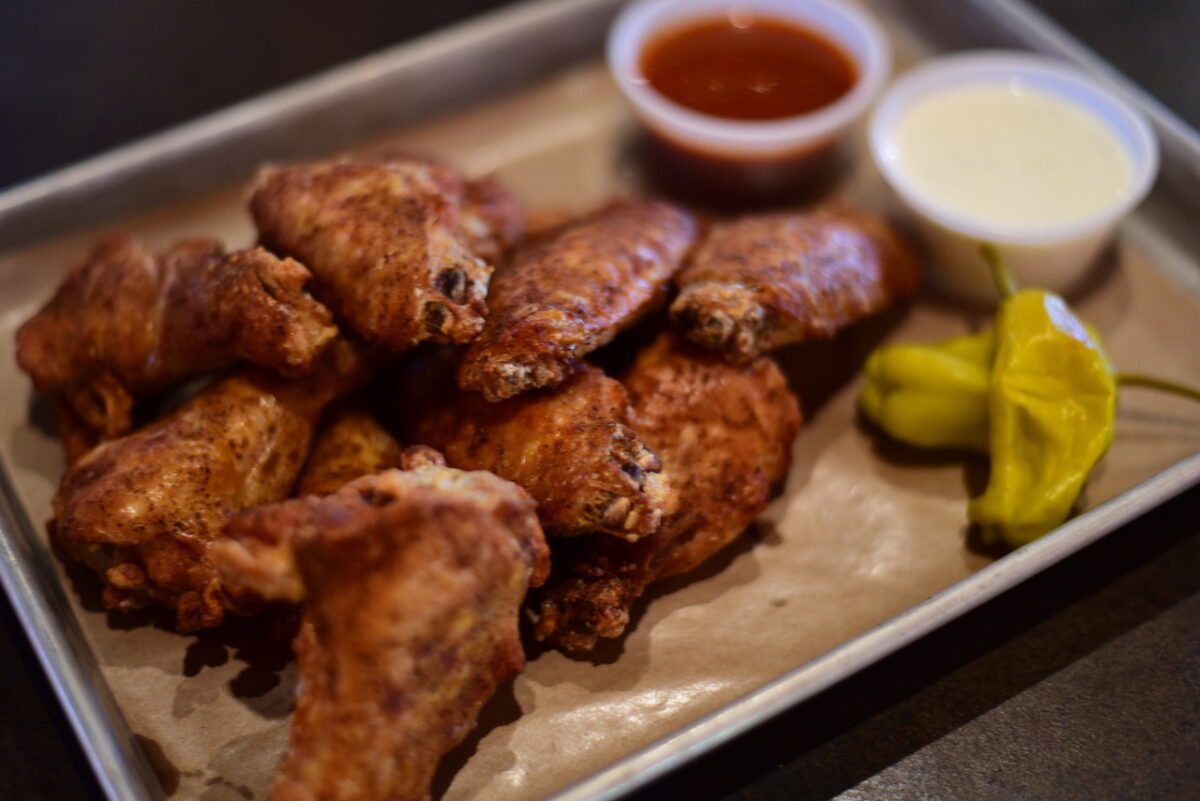
Chuck Gawey, owner of the Tulsa-based Albert G’s Barbecue, keeps a tradition of seasoning with in-house rubs and then, he says, “we use a lot of ‘go low and slow,’” he says. “Brisket and pork cook overnight with hickory wood, and we load up the smoker with ribs, turkey and bologna. Our sauce has been the same for the last 32 years.”
Oklahoma BBQ behemoth RibCrib uses a blend of methods according to Matt Thompson, vice president of operations for Chandler Hospitality Group.
“We’re a blend of classic Oklahoma and Kansas City styles, plus our own ideas. RibCrib has never been afraid to do its own thing, and that’s served us well. We love Kansas City barbecue, so we pay special attention to our sauces and frequently experiment with new barbecue flavors from regions like Tennessee, Carolina and Alabama.
“Something that also sets us apart is our choice of wood,” Thompson continues. “We use split green hickory rather than pecan or oak preferred by lots of other places in Oklahoma and Texas. For us, green hickory smoke is a flavor that’s every bit as important as our slathers and rubs – we’ve got to have it. It gives our meats their distinct RibCrib flavor.”
What Sides Reign Supreme?
For many barbecue lovers, side dishes can make or break a meal. Popular choices range from cowboy caviar (seasoned bean salad) to mashed potatoes, coleslaw and beyond.
Sims himself favors baked beans made daily with morsels of smoked brisket, brown sugar, sweet and mild sauce and “a few other secret ingredients,” he says.
At Earl’s, “all of our famous sides are homemade,” says Curtis. “Mustard potato salad is our favorite, but our bestselling side is fried okra.”
Potato salad is the biggest selling Albert G’s side dish, Gawey says, followed closely by coleslaw, baked beans and tabbouleh.
“My favorite side is currently our coleslaw,” says RibCrib’s Thompson. “We’ve been developing new recipes for coleslaw, potato salad, mac ‘n’ cheese, pickles and more. I’d say it’s evenly split between the coleslaw and the potato salad right now. Our seasoned fries have always been popular, but our new fresh-fried potato chips have been gaining on them since we introduced them in 2023.”
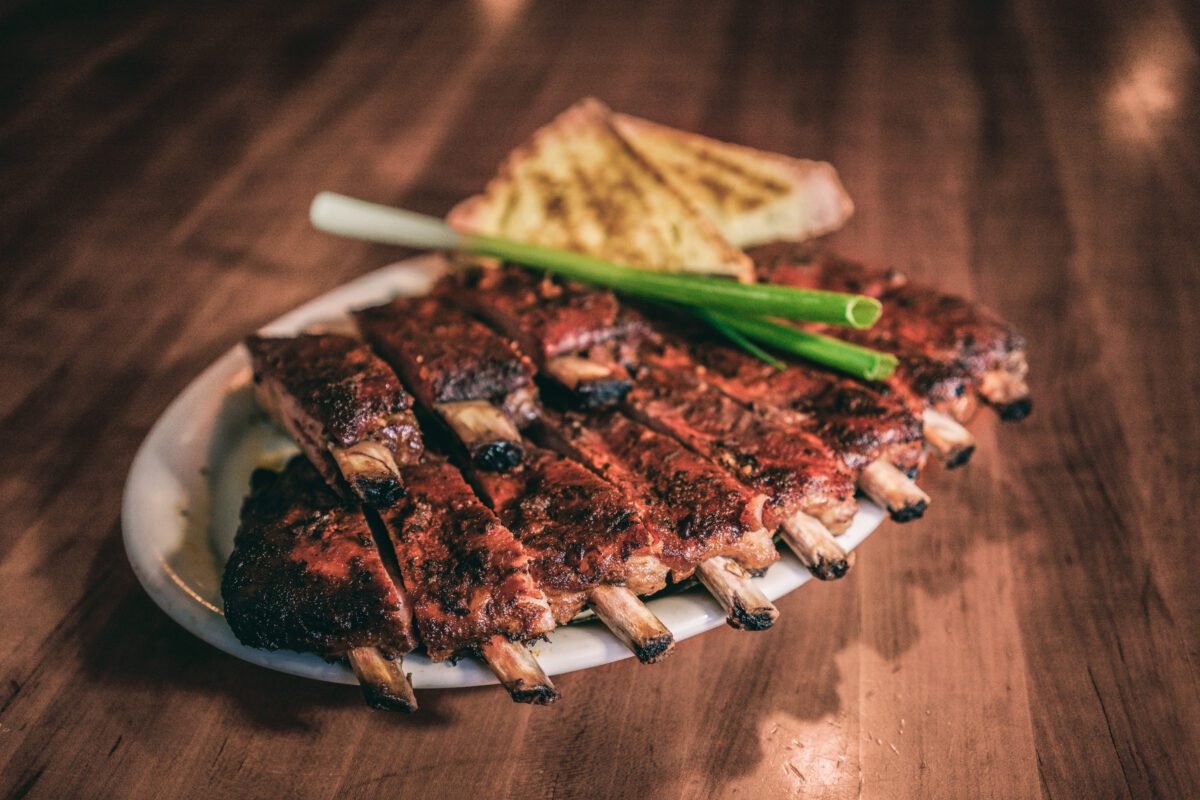
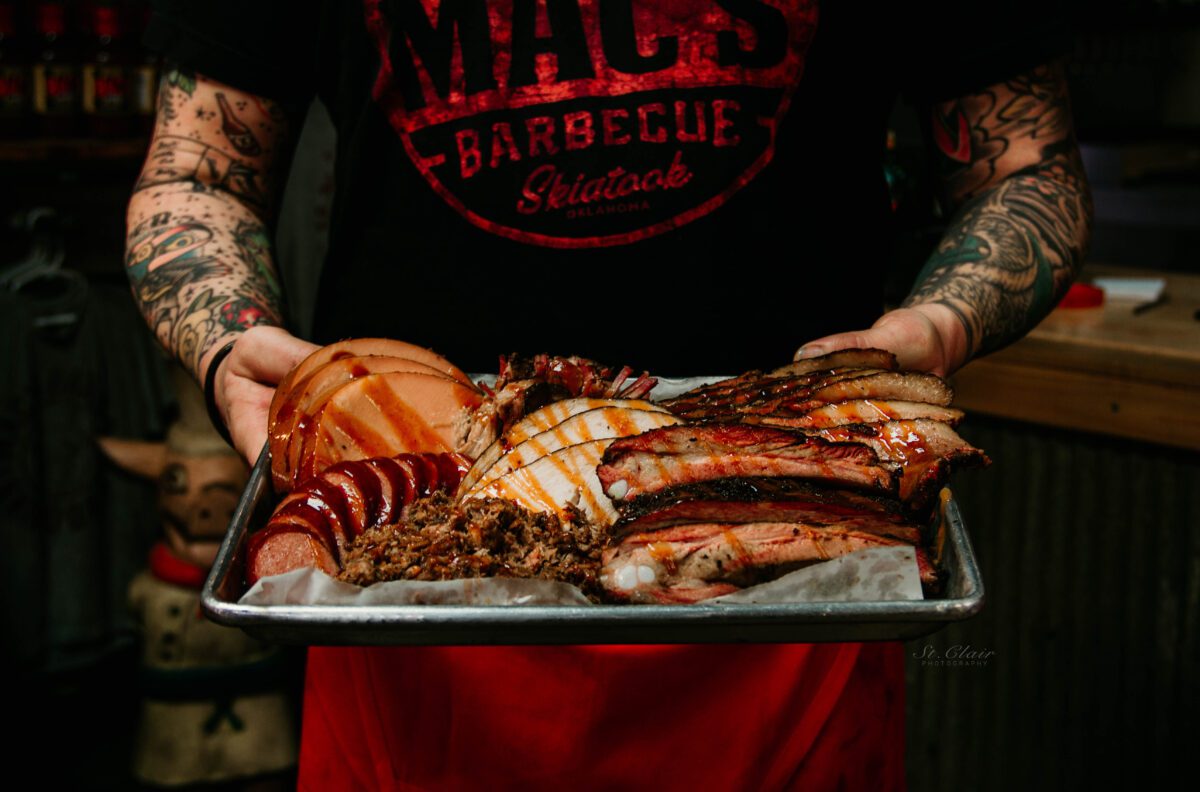


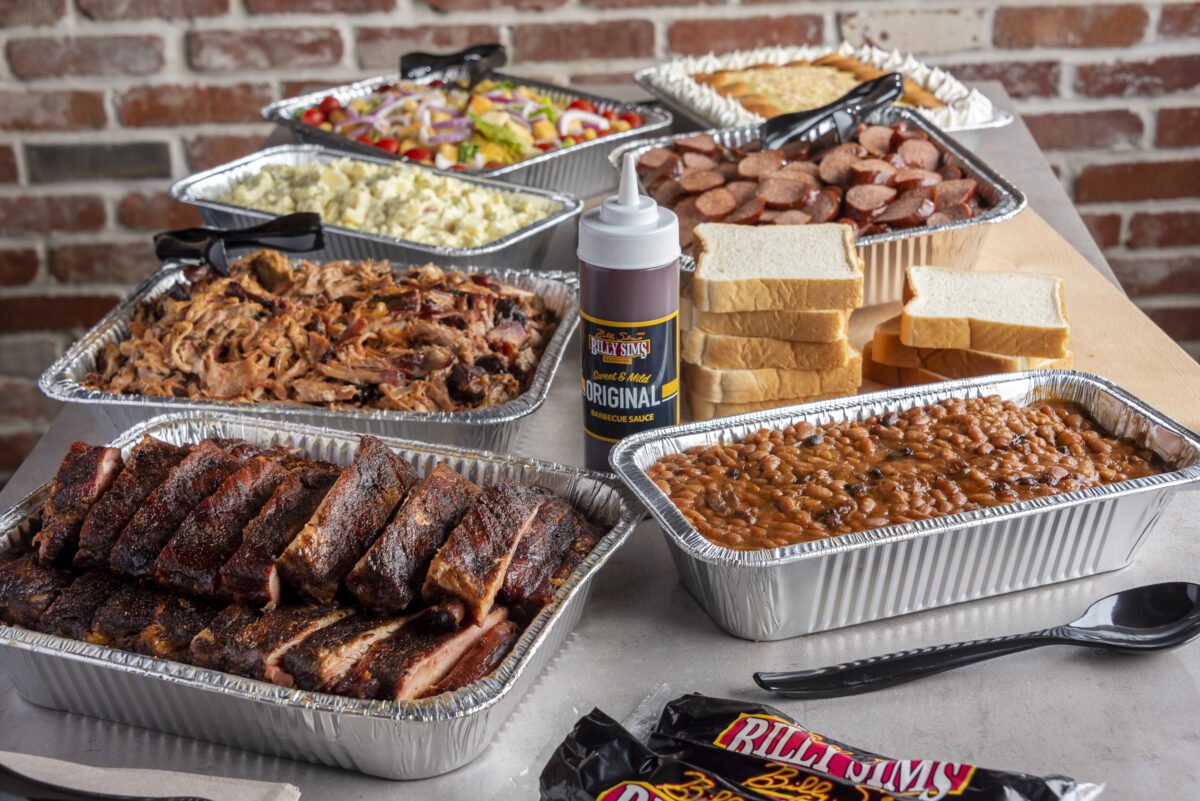

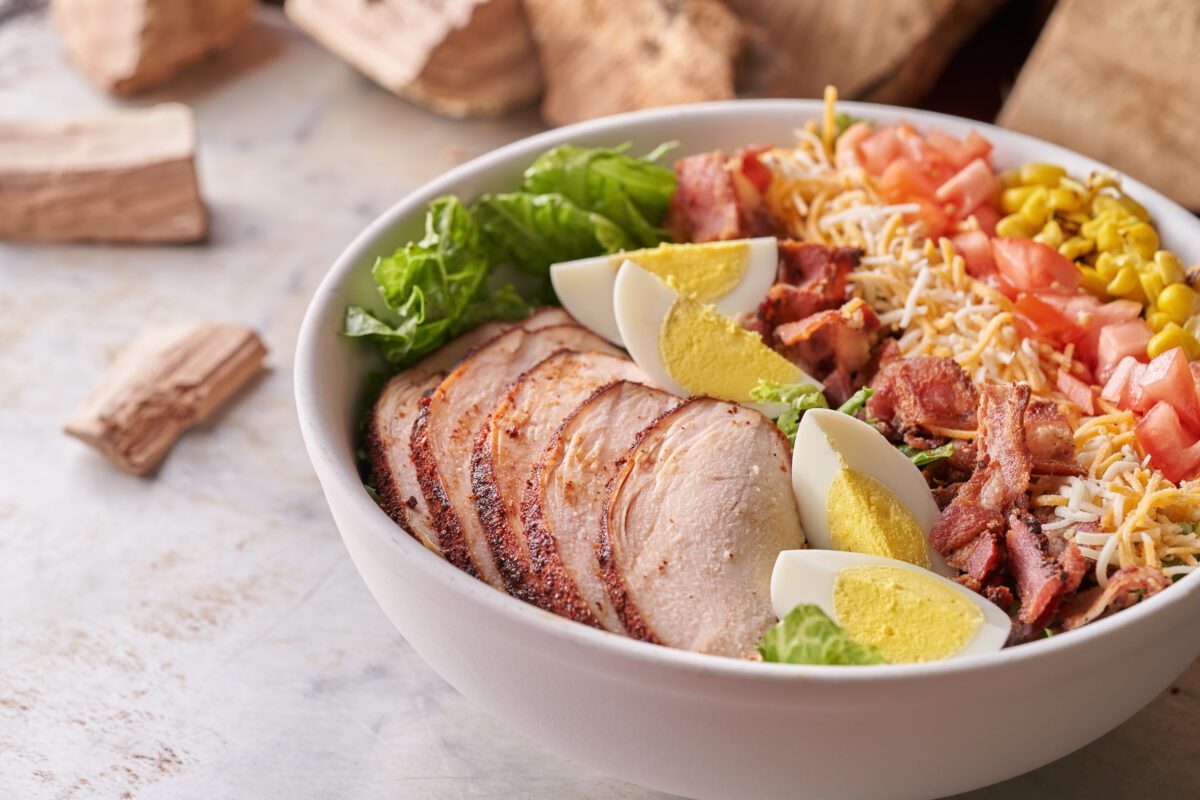
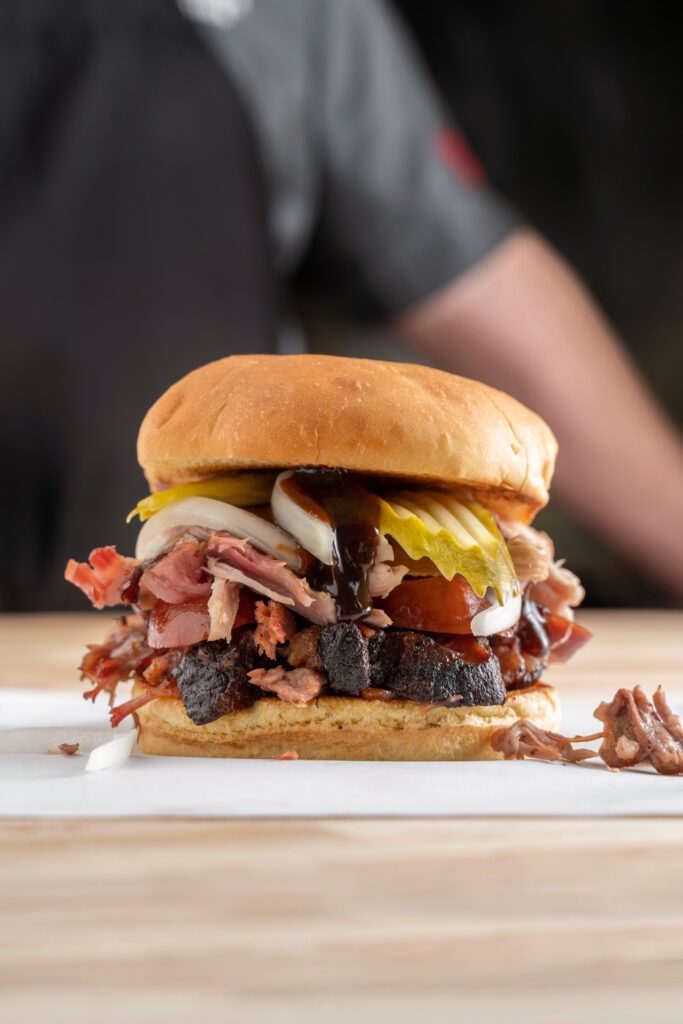
Getting Techy
The 2024 CES event – a large consumer technology show – unveiled new grilling gadgets to get excited about, including smart indoor smokers for winter grilling; high-end electric grills; battery powered grills; hybrid grills, mixing wood pellet smoke with electric heating; and even some artificial intelligence-powered grills.
Some barbecue producers run old school, while others in the state embrace new technologies.
Thompson says at Rib Crib that “each location is using instant-read thermometers and timers, but that’s about as hi-tech as it gets for us and barbecue,” he says. “The smokers used are made by Ole Hickory – think of a giant rotisserie with racks of ribs, pork, and all that good stuff constantly turning. We load the firebox up with hickory to generate the smoke, and the smoker uses a fan to circulate it through the main chamber, then up and out the chimney.”
Sims says that “at the moment, we are old school – but never closed minded to the future. I know there are some technologies coming.”
Meat Substitutes: Yay or Nay?
Nationwide, many restaurants are offering meat substitutes for vegan and vegetarian diners, as well as offering more smoked or grilled vegetables and tofu. But do the meat-loving BBQ enthusiasts see the hype?
“I’ve tried those plant-based protein burgers,” says Gawey at Albert G’s. “They’re not bad, and I don’t mind trying different things.”
Thompson says Rib Crib is always on the lookout for new ideas “but we’re not trying to replace meat at the ‘Crib. If we bring in a barbecue vegetarian option, we want it to be delicious and distinct, instead of a meat imitation.”
Sims agrees: “We are bare bones barbecue so its traditional meats and sides. I’m not opposed to meat substitutes, but I have not seen many items that can be smoked to my knowledge.”
Getting Saucy
The five types of well-known barbecue sauces are defined by their ingredients. Tomato-based sauces are sweet and go well with sugary rubs, while vinegar-based tends to be strong and astringent. Mustard-based is peppery, and for a creamy component, mayonnaise-based does the trick, usually offering a kick of horseradish. Worcestershire-based is often all of the above with a sweet, bold and slightly acidic kick.
Okie-style sauce tends to have echoes of a Western North Carolina iteration, with that emphasis on ketchup and vinegar, as well as that Memphis influence.
For Albert G’s, there’s no real secret to the sauce.
“We don’t use anything crazy, and personally I don’t think our ribs need sauce,” says Gawey. “But our sauce does go well with pork, and a lot of our customers like to mix our sweet and hot sauces together. We do make a sauce for our wings that has sriracha in it, and it’s a little spicier than our hot sauce barbecue. The wings are smoked and then dropped in the fryer to make crispy.”
Trends in BBQ
Across the country, barbecue trends are expanding to include more vegetables and seafood, and we’re also seeing more AI products helping at the grill. But fads come and go, and many are focused on what they know works.
“When it comes to trends, ours is sticking to what we do best,” says Gawey with Albert G’s. “We take our great basics and do some daily special variations like a turkey club with smoked bacon on Mondays. On Tuesdays, we do pulled pork tacos and for Wednesdays, it’s our take on a Philly steak sandwich. We do a burger day and with everything else we do, it’s all barbecue related.”
Some pitmasters eschew trends and computer assisted cookery – as with Earl’s. When asked about implementing new technology for the barbecue, Curtis laughs: “If you mean salt, pepper and smoke – yes!”
According to Gordon Food Service, a prominent foodservice distributor based in Wyoming, traditional American barbecue is having a global moment, and slow-cooked barbecue – with the use of wood, oak and charcoal – is being combined with international world flavors, spices and ingredients including influences of Asian flavors as well as the Indian notes of cinnamon, coriander, ginger and cardamom.
Fueling the Fire with Competition
Learning from fellow grill-masters and utilizing family recipes creates strong grilling expertise. Some folks take it a step further, expanding and learning from barbecue and grilling competitions. Many restaurants have short term classes, and the Oklahoma Barbecue Society is the grand old dame of the state’s grilling competitions.
Created by judges involved in the Bixby BBQ’n Blues Festival, the Oklahoma Barbecue Society has offered competitions for more than a decade, expanding statewide and involving both passionate amateurs and experienced commercial food producers. The group’s website keeps interested parties up to date with Oklahoma’s competition circuit.
Upcoming competitions include Oklahoma’s Smokin’ On The Route at the Route 66 Heritage Festival, July 26-27 in Miami, and the 37th Annual Cherokee Strip Cook Off in Ponca City September 20-21.
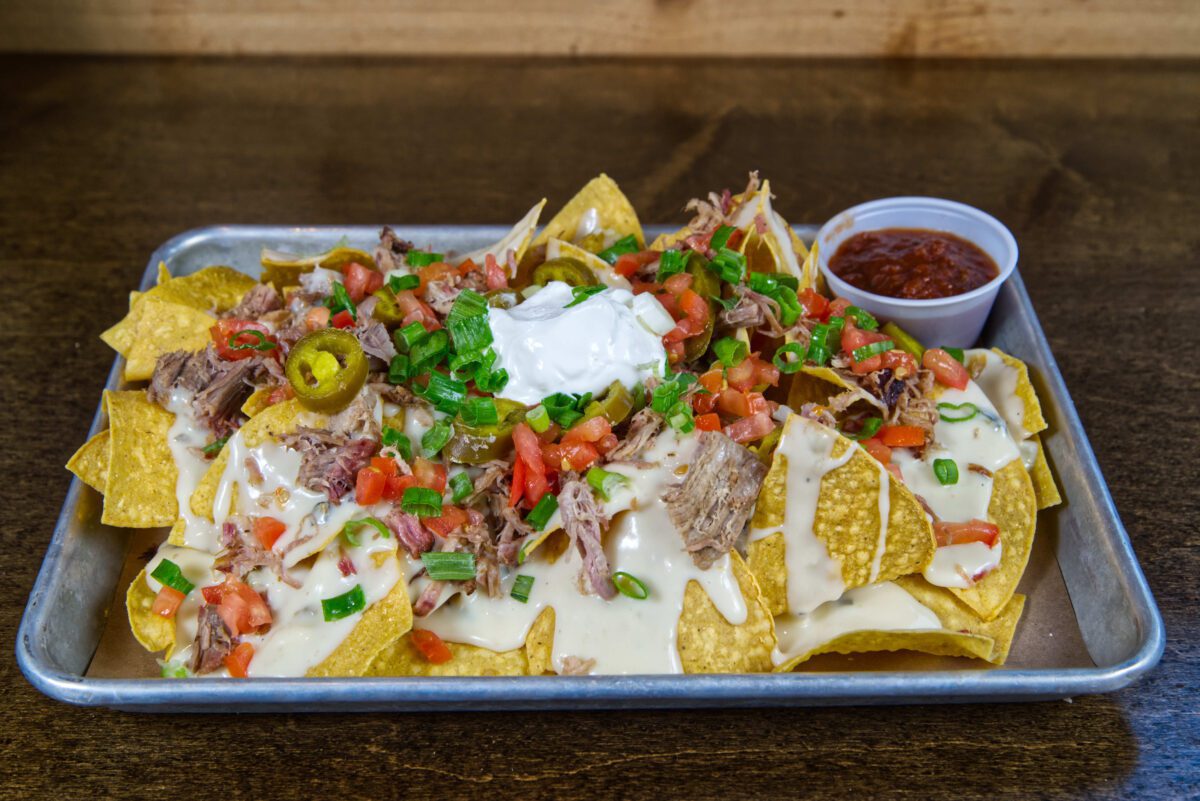

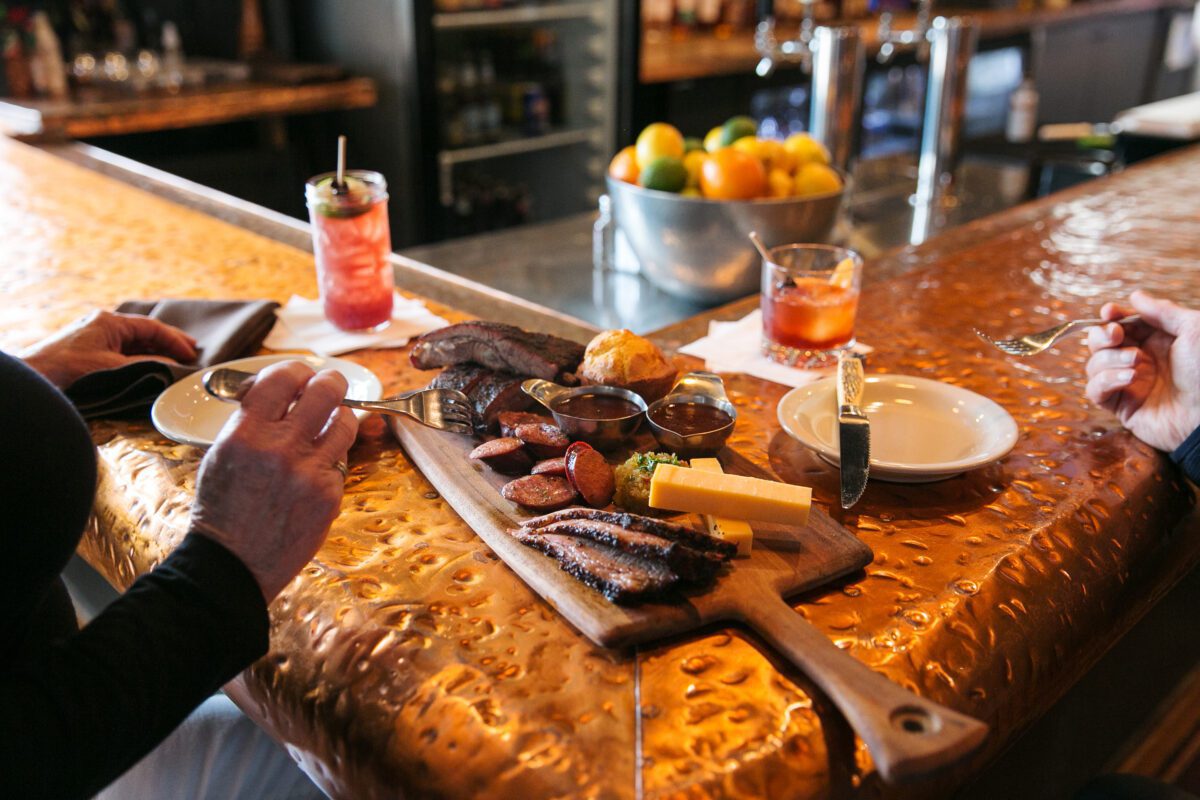
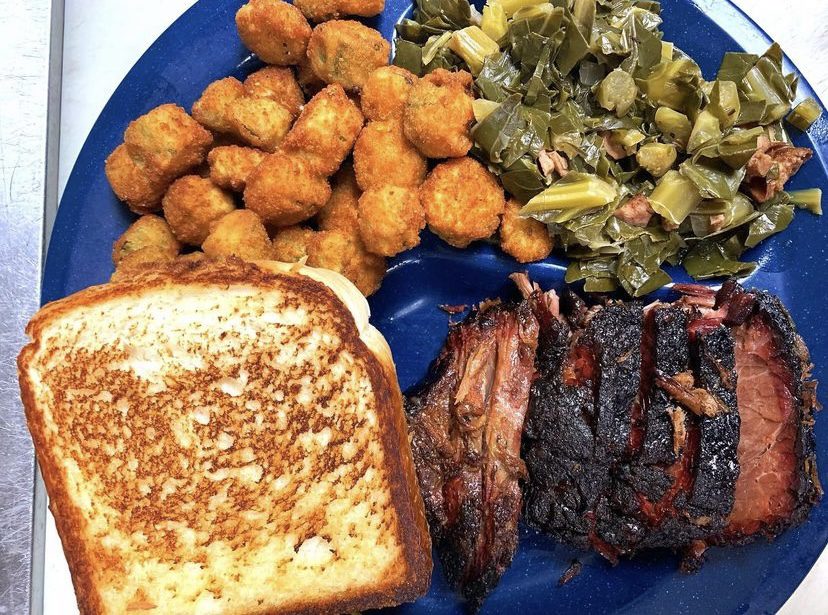
What to Imbibe
Beverage pairings with barbecue enhance the culinary experience – whether enjoying a house made lemonade or a cold beer.
The Kentucky Mule – a mélange of Wild Turkey (Kentucky bourbon), fresh lime and ginger beer – is a great pairing with barbecue ribs, as the smoky flavors mingle with the zesty citrus and smokey bourbon. Citrus and fruity beverage elements bring out the best in barbecue, it seems.
“Any of the local beer goes great with our nachos and wings,” says Albert G’s Gawey. “Our downtown store features about 90 different bourbons and we make several bourbon-related drinks, too.”
Non-alcoholic drinks are also suggested and at Earl’s, “it’s the sweet tea, of course,” says Curtis.
Sims continues: “Currently, we are Pepsi vendors, but are testing a few locations with fresh lemonade,” he says. “The most popular beverage sold across all our restaurants is Dr. Pepper.”
Veggie Power
When it comes to grilling vegetables, there are specific, long-handled metal baskets that get the job done, as well as aluminum foil packets for another tried-and-true method. The Kingsford brand of charcoal recommends certain vegetables for hardiness and standing up to heat, including corn on the cob, artichokes, eggplant, onions, bell peppers, squash zucchini, mushrooms, asparagus and tomatoes.
Preparing the vegetables includes lightly brushing them with olive oil. For corn, remove the husks and silk or just place husk-intact corn over the coals, turning every few minutes until the husk is partly blackened. Smaller veggies like tomatoes, mushrooms and cut peppers do well on skewers.
In addition to side dishes or even as an entrée, vegetables can also be an adornment.
“We love grilling up onions and jalapeños,” says Curtis at Earl’s, “especially when topping our half-pound cheddar burger.”






















